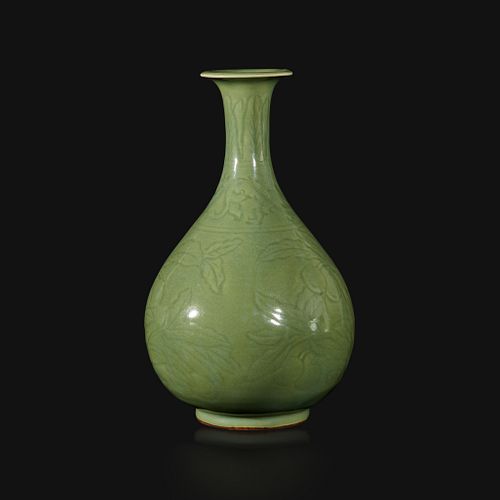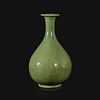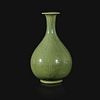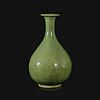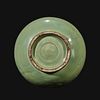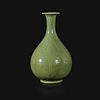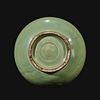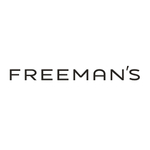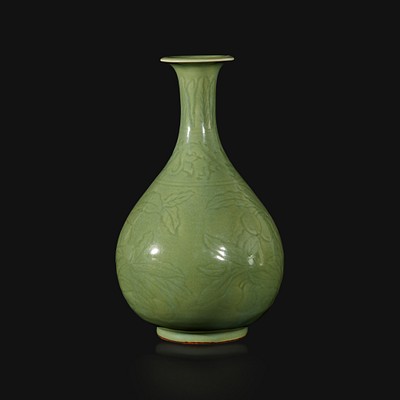A Chinese Longquan incised celadon-glazed bottle vase, Yuhuchunping Ming Dynasty, 15th Century
About Seller
2400 Market St
Philadelphia, PA 19147
United States
Established in 1805, Freeman’s Auction House holds tradition close, with a progressive mind-set towards marketing and promotion, along with access to a team of top experts in the auction business. And now with offices in New England, the Southeast, and on the West Coast, it has never been easier to ...Read more
Two ways to bid:
- Leave a max absentee bid and the platform will bid on your behalf up to your maximum bid during the live auction.
- Bid live during the auction and your bids will be submitted real-time to the auctioneer.
Bid Increments
| Price | Bid Increment |
|---|---|
| $0 | $25 |
| $500 | $50 |
| $1,000 | $100 |
| $2,000 | $200 |
| $3,000 | $250 |
| $5,000 | $500 |
| $10,000 | $1,000 |
| $20,000 | $2,000 |
| $30,000 | $2,500 |
| $50,000 | $5,000 |
| $100,000 | $10,000 |
About Auction
Apr 8, 2021
Freeman's upcoming Asian Arts auction includes a selection of fine Chinese porcelains, including a rare Yongzheng 'Dragon and Waves' Meiping and a Longquan Celadon vase. Freeman's info@freemansauction.com
- Lot Description
Of elegant pear-shaped form, with swelling body, waisted neck and flared lip, all on a low circular foot; the body incised with two fruiting sprays, probably loquats, the shoulder with a scrolling foliate band, the neck with upright leaves, all with an even sea-green glaze, recessed circular underside.
(H: 13 in.)Provenance: Formerly private American collection, by descent from their parents
Acquired by the present owner from the above
NOTE: Bottle vases of pear-shaped form were exceedingly popular as wine vessels in the Yuan and early Ming dynasty, with examples produced at the Jingdezhen porcelain kilns as well as at the Longquan celadon kilns. Similar bottle vases, often of blue and white porcelain, are depicted in court scenes portrayed in 15th century Timurid illuminated manuscripts, such as those illustrated by Laurence Binyon et all in "Persian Miniature Painting", New York, 1971, plates XXXIII-A 42(d), XLVII-A 49(h), XLIX-B 49 (p) and LXVII. This graceful form was revived numerous times in centuries thereafter.
The elegant potting and refinement of silhouette, together with the quality and style of the incised designs strongly support this vessel's inclusion among a body of works made for Chinese imperial use in the early Ming dynasty, particularly during the early 15th century reigns of the Yongle and Xuande emperors. Several related early Ming examples from the Qing Court collections, preserved in the Palace Museum, Beijing are illustrated in Geng Baocheng et al, "Longquan of the World, Longquan Celadon and Globalization", vol. 1, p. 188-9, no. 120; vol 2. pp. 166-166, no 99; and ibid pp. 168-169, no.100. See also a vessel of this form, with later silver spout, handle and cover, in the collection of the Topkapi Sarayi, illustrated by T. Misugi, "Chinese Porcelain Collections in the Near East, Topkapi and Ardebil", vol. 2, Hong Kong, 1981, p. 223, T.162, and another with later handle, ibid p. 263, T.160.
The motif of fruiting sprays, such as peaches, grapes, lychees, kumquats, pomegranates and loquats, often decorated Jingdezhen blue and white porcelains and were also incised into the bodies of Longquan celadons, where the carved lines collected the thick green glaze. The rounded fruit borne on long curved stems with deeply-ridged lanceolate leaves depicted on the present vase are likely to be loquats. The loquat, also known as the Chinese plum, has various symbolic connotations such as endurance, overcoming adversity, and luck, because it flowers in the autumn and winter and the fruit ripens in the spring. Additionally, the bright yellow color of the ripe fruit is said to symbolize gold or wealth. This use of loquats as a main motif is rare. For an early Ming dynasty ewer with body of similar form, incised with similar fruiting sprays in the Palace Collection, Beijing, see Geng Baocheng et al, vol. 1, pp. 194-195, no. 123, and ibid. vol 2, pp. 210-211, no. 125 for a large dish with similar fruit spray as a secondary motif, depicted on the exterior.
The recessed circular base, while unusual, may be seen most often in pieces dated to the Yuan Dynasty, such as the example held in the Palace Museum, Beijing, illustrated in Geng Baochang et al, vol. 1, p. 121, no. 63; two Yuhuchunping excavated in 1984, vol. 2 pp. 104-105, no. 62 and pp. 106-107, no. 63; a double-gourd vase, also excavated in 1984, vol. 1, p 127, no. 68; and another, from the Qing court collection vol. 2. p. 110, no. 66. An early Ming jar and cover, with similarly recessed foot may be seen in vol 2, p. 185, no. 110 - Shipping Info
-
No lot may be removed from Freeman’s premises until the buyer has paid in full the purchase price therefor including Buyer’s Premium or has satisfied such terms that Freeman’s, in its sole discretion, shall require. Subject to the foregoing, all Property shall be paid for and removed by the buyer at his/ her expense within ten (10) days of sale and, if not so removed, may be sold by Freeman’s, or sent by Freeman’s to a third-party storage facility, at the sole risk and charge of the buyer(s), and Freeman’s may prohibit the buyer from participating, directly or indirectly, as a bidder or buyer in any future sale or sales. In addition to other remedies available to Freeman’s by law, Freeman’s reserves the right to impose a late charge of 1.5% per month of the total purchase price on any balance remaining ten (10) days after the day of sale. If Property is not removed by the buyer within ten (10) days, a handling charge of 2% of the total purchase price per month from the tenth day after the sale until removal by the buyer shall be payable to Freeman’s by the buyer. Freeman’s will not be responsible for any loss, damage, theft, or otherwise responsible for any goods left in Freeman’s possession after ten (10) days. If the foregoing conditions or any applicable provisions of law are not complied with, in addition to other remedies available to Freeman’s and the Consignor (including without limitation the right to hold the buyer(s) liable for the bid price) Freeman’s, at its option, may either cancel the sale, retaining as liquidated damages all payments made by the buyer(s), or resell the property. In such event, the buyer(s) shall remain liable for any deficiency in the original purchase price and will also be responsible for all costs, including warehousing, the expense of the ultimate sale, and Freeman’s commission at its regular rates together with all related and incidental charges, including legal fees. Payment is a precondition to removal. Payment shall be by cash, certified check or similar bank draft, or any other method approved by Freeman’s. Checks will not be deemed to constitute payment until cleared. Any exceptions must be made upon Freeman’s written approval of credit prior to sale. In addition, a defaulting buyer will be deemed to have granted and assigned to Freeman’s, a continuing security interest of first priority in any property or money of, or owing to such buyer in Freeman’s possession, and Freeman’s may retain and apply such property or money as collateral security for the obligations due to Freeman’s. Freeman’s shall have all of the rights accorded a secured party under the Pennsylvania Uniform Commercial Code.
-
- Buyer's Premium



 EUR
EUR CAD
CAD AUD
AUD GBP
GBP MXN
MXN HKD
HKD CNY
CNY MYR
MYR SEK
SEK SGD
SGD CHF
CHF THB
THB